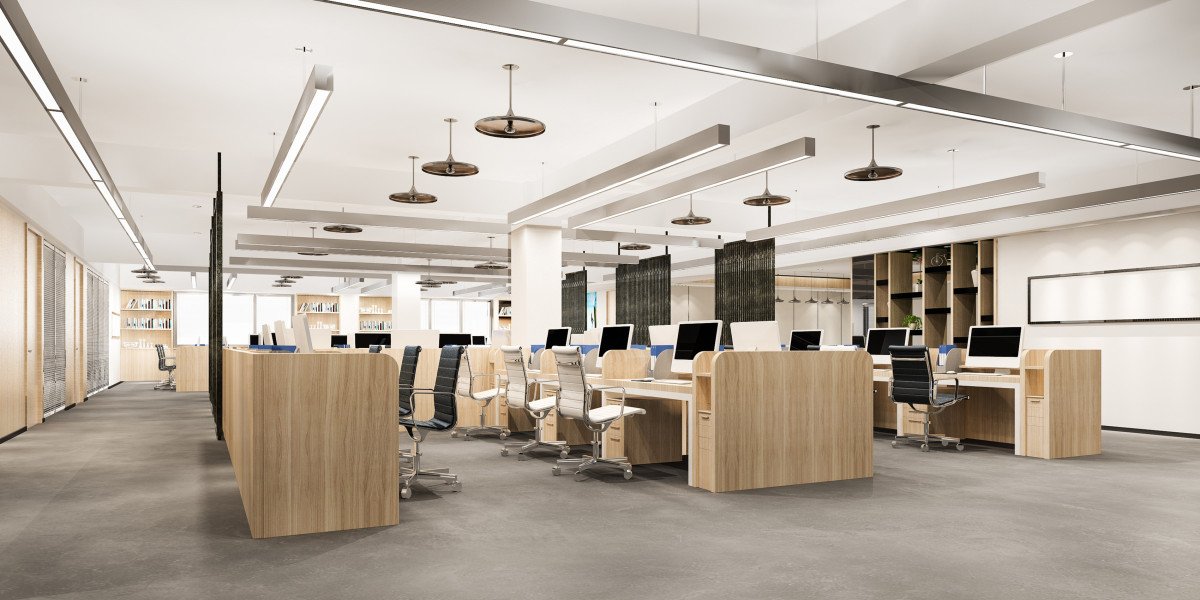In the ever-evolving world of office design, one trend has been gaining consistent momentum: open space cubicles. While open office plans and coworking areas have dominated the workplace conversation in recent years, open space cubicles strike a balance between the need for collaboration and the necessity of personal workspace. But beyond the obvious advantages, there are several lesser-known benefits of this design approach that can significantly enhance both employee experience and productivity.
Let’s dive into the top 7 benefits of open space cubicles that you probably didn’t know about—and why they might just be the game-changing solution your workplace needs.
1. Encourages Organic Collaboration Without Compromising Focus
Unlike fully open office layouts that can feel chaotic, open space cubicles provide a hybrid solution. They offer low partitions or subtle barriers that allow employees to remain visually and socially connected, yet focused. This design promotes casual conversations, brainstorming, and idea-sharing—without the distractions that come with completely barrier-free spaces. It’s collaboration on your own terms.
LSI keywords: hybrid workstations, semi-private office setup, team interaction, visual openness
2. Reduces Hierarchical Barriers
Traditional offices often feature enclosed cabins for senior staff, reinforcing hierarchies and limiting access between team members and decision-makers. Open space cubicles disrupt this format by placing everyone—managers, leads, and team members—on a more equal footing. This fosters a culture of approachability and open dialogue. Employees feel more empowered to share ideas and communicate with leadership.
LSI keywords: flat office hierarchy, transparent workspace, inclusive design
3. Boosts Employee Wellness Through Design
Workplace wellness is no longer a luxury—it’s a necessity. The physical layout of an office has a profound effect on employee well-being. Open space cubicles are often designed to allow more natural light, airflow, and ergonomic customization. Studies show that exposure to daylight and good ventilation reduces eye strain, boosts mood, and enhances overall energy levels. When employees feel better, they perform better.
LSI keywords: ergonomic workspace, office with natural light, employee wellness design
4. Improves Communication Speed and Efficiency
Quick questions and updates don't need to be formal meetings or long emails. The proximity enabled by open space cubicles makes communication faster and more fluid. Whether it’s a quick check-in or impromptu problem-solving, this kind of communication flow improves workflow and prevents project bottlenecks.
LSI keywords: rapid feedback loop, efficient team communication, informal discussions
5. Scalable for Growing Teams
One of the most underrated advantages of open space cubicles is their scalability. Modular in nature, these workstations can be easily rearranged, expanded, or downsized based on team size and office needs. For startups or growing businesses, this adaptability means avoiding costly renovations or relocations.
LSI keywords: modular office layout, flexible desk arrangement, adaptable office furniture
6. Promotes a Stronger Team Culture
Team dynamics thrive in environments where people feel connected. Unlike isolated cubicles, open space cubicles foster casual conversations, shared lunch breaks, and a sense of community. This informal socializing isn’t just nice—it has measurable business benefits. Strong workplace relationships can improve job satisfaction, retention, and even creativity.
LSI keywords: employee bonding, workplace camaraderie, team-building atmosphere
7. Cost-Effective Without Compromising Style
From a financial perspective, open space cubicles make a lot of sense. They use fewer building materials than traditional high-wall cubicles or individual offices, resulting in lower setup costs. Plus, they take up less square footage, allowing more people to fit comfortably in a space. With modern design options, you don’t need to sacrifice aesthetics either—these cubicles can be both sleek and functional.
LSI keywords: budget-friendly office design, affordable cubicle system, space-efficient office furniture
Designing the Perfect Open Space Cubicle Setup
Knowing the benefits is just the first step. Implementing a well-thought-out design is where the real transformation begins. It’s important to analyze the specific needs of your team before choosing the right layout. Consider factors like noise levels, the type of work being done, and how often team members collaborate. Noise-canceling panels, green dividers, or even acoustic ceiling baffles can be used to enhance sound management. To keep the workspace inspiring, integrate modern aesthetics such as biophilic design, adjustable desks, and customized storage units.
Natural lighting should be maximized to support wellness and productivity. Add subtle branding elements like colors or textures to personalize the space and maintain company identity. Remember, the goal of open space cubicles is to blend individual comfort with shared creativity.
FAQs About Open Space Cubicles
Q1. Are open space cubicles good for employee productivity?
Yes. When designed thoughtfully, open space cubicles offer the best of both worlds—social connectivity and personal space. This balance helps employees remain focused while still engaging with their teams when needed.
Q2. How do open space cubicles differ from traditional cubicles?
Traditional cubicles often have high partitions and feel more isolated. Open space cubicles feature lower walls, allowing for more light, visibility, and team interaction, creating a semi-private yet open environment.
Q3. Can open space cubicles work in smaller offices?
Absolutely. Their modular nature makes open space cubicles ideal for small spaces. They can be configured to fit your layout while maximizing usable area and maintaining comfort.
Q4. Do open space cubicles help reduce office costs?
Yes. Since they require fewer materials and can accommodate more employees in the same area, open space cubicles are a cost-effective solution for businesses looking to optimize space without breaking the bank.
Q5. Are there any downsides to open space cubicles?
The main challenge is managing noise and distractions. However, this can be addressed with proper layout design, acoustic enhancements, and company culture that respects focused work time.


